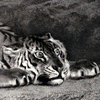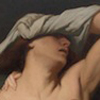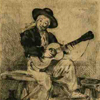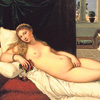Moorish Bath may take place in an Oriental setting, but Gérôme’s bather is entirely based upon the white European female. Despite the importance of accurate Eastern details, the main figure of the painting is rooted in Western ideals. Jean-Auguste-Dominique Ingres, one of the recent masters Gérôme would have studied, does the same in his Valpinçon Bather (1808, Musée du Louvre, Paris) (Fig. 6). His bather wears a turban much like that worn by the dark skinned slave in Moorish Bath. The couch on which she is seated includes a band of decoration that mirrors the Middle Eastern tilework of Gérôme’s Turkish bath. Both Gérôme and Ingres include extravagant drapes of fabric. The small fountain and pool at the bather’s feet hints at a location much like that of Moorish Bath. It is clear that both paintings make use of exotic details to provide a setting. Gérôme, following in Ingres’ footsteps, attempts to create an exotic Near Eastern bathing scene through these details.
However, both artists look to Western life when painting the main subjects of these works. Ingres was probably looking to classical examples of the female nude (Leeks 1986, 32). Gérôme most likely painted the pale female in
Moorish Bath from memory (Ackerman 1986, 226). They uphold thoroughly Western ideals of beauty by centering their Oriental scenes on figures based upon European women. Both paintings place little emphasis on the bathers’ identities: the two are focused upon not as people, but as ideal objects of beauty.Their anonymity shows the extent to which these two male European artists fetishized the white female nudes. The near Eastern details of the works are reduced to decorative elements: both are predominantly concerned with the white female nude with which they are familiar. Despite Oriental elements,
Moorish Bath is a statement of European prejudices and ideals. While he expands the
Valpinçon Bather’s premise into an entire Oriental scene, Gérôme continues its theme by representing a woman based upon European female nude. The use of Orientalism as an interesting decorative aspect reflects Western attitudes towards the Near East, reducing other cultures to settings in which to contemplate the bodies of women of their own culture.
Next
 Éugene Delacroix, The Women of Algiers in Their Apartment
Éugene Delacroix, The Women of Algiers in Their Apartment

















